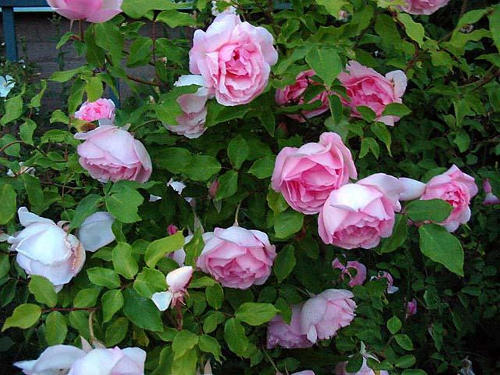Duchesse de Brabant PDF Handout
| Classification | Tea |
|---|---|
| Year Introduced | 1857 |
| Size Category/Growth Habit | Medium Shrub |
| Height | 6 feet |
| Width | 4 feet |
| Spacing | 6 feet apart on centers |
| Color | Rose pink |
| Bloom | Very double, large, cupped and rounded like a lovely wine goblet. Successive flushes of bloom spring, summer, and fall. |
| Fragrant | Very |
| Planting Site | Full sun, good air circulation |
| Water Use | Keep moist until established (usually requires one month to establish). Average water needs during growing season. |
| Cold Hardiness | Hardy in zones 7-9 |
| History | Other names are Comtesse de Labarathe and Comtesse Ouwaroff. Parents are unknown. This large, fragrant rose named for the Duke of Brabant of Belgium was introduced in France by Bernede in 1857. President Theodore Roosevelt often wore a blossom from Duchesse de Brabant in his lapel. |
Long lasting fragrance and full cupped, repetitious bloom set Duchesse de Brabant apart. This rose requires adequate spacing for optimum growth and bloom. It makes a great specimen plant in the perennial border or plant 3 or 5 plants in a group in special locations. Avoid overcrowded, damp or closed-in areas.

Landscape Uses
Like so many of the old roses, Duchesse De Brabant works well as a stand alone specimen, providing a useful accent in a perennial border. Adequate spacing is required for this selection to maintain optimum growth and flowering.

